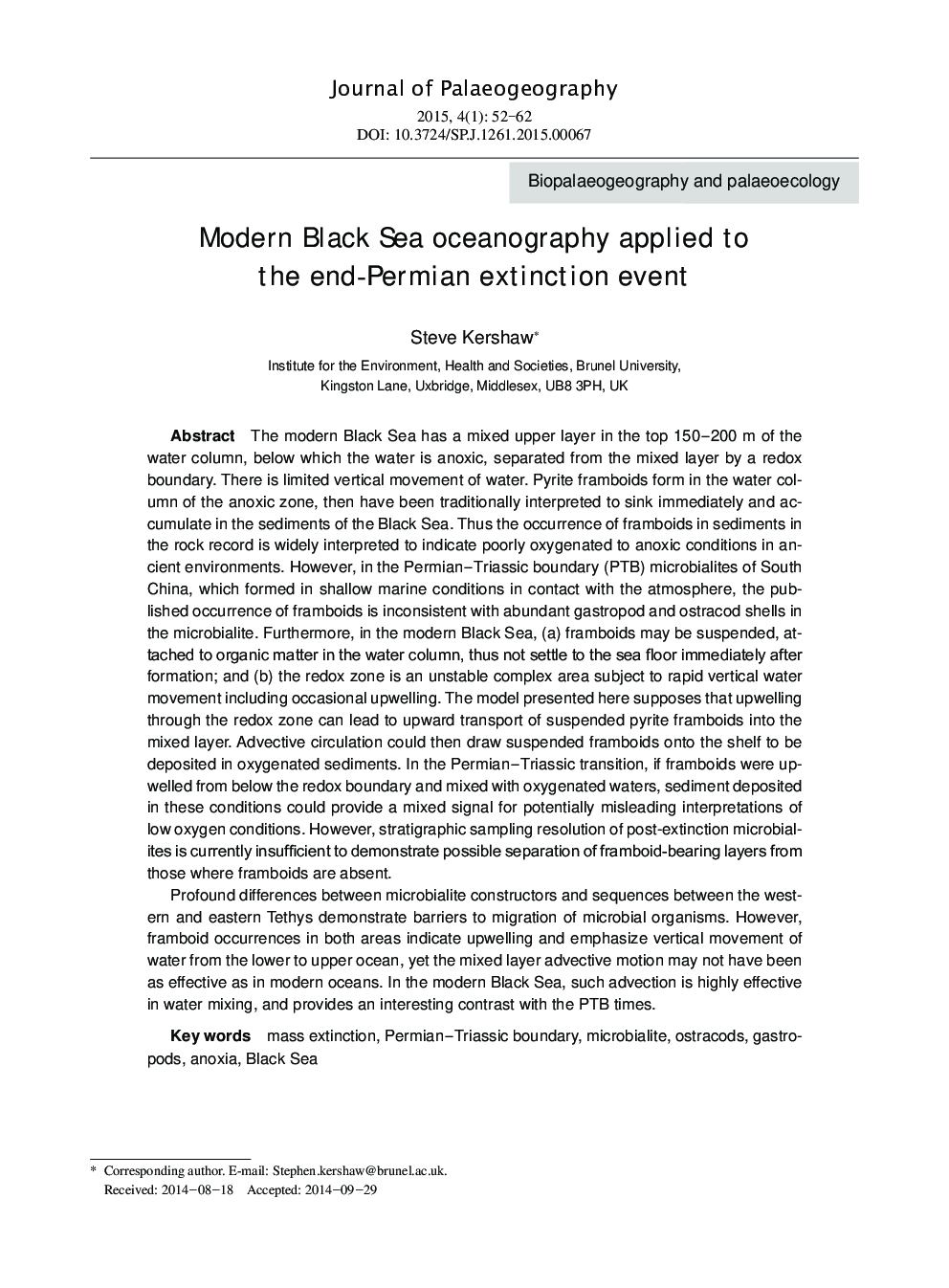| کد مقاله | کد نشریه | سال انتشار | مقاله انگلیسی | نسخه تمام متن |
|---|---|---|---|---|
| 4581000 | 1333672 | 2015 | 11 صفحه PDF | دانلود رایگان |
The modern Black Sea has a mixed upper layer in the top 150–200 m of the water column, below which the water is anoxic, separated from the mixed layer by a redox boundary. There is limited vertical movement of water. Pyrite framboids form in the water column of the anoxic zone, then have been traditionally interpreted to sink immediately and accumulate in the sediments of the Black Sea. Thus the occurrence of framboids in sediments in the rock record is widely interpreted to indicate poorly oxygenated to anoxic conditions in ancient environments. However, in the Permian–Triassic boundary (PTB) microbialites of South China, which formed in shallow marine conditions in contact with the atmosphere, the published occurrence of framboids is inconsistent with abundant gastropod and ostracod shells in the microbialite. Furthermore, in the modern Black Sea, (a) framboids may be suspended, attached to organic matter in the water column, thus not settle to the sea floor immediately after formation; and (b) the redox zone is an unstable complex area subject to rapid vertical water movement including occasional upwelling. The model presented here supposes that upwelling through the redox zone can lead to upward transport of suspended pyrite framboids into the mixed layer. Advective circulation could then draw suspended framboids onto the shelf to be deposited in oxygenated sediments. In the Permian–Triassic transition, if framboids were up-welled from below the redox boundary and mixed with oxygenated waters, sediment deposited in these conditions could provide a mixed signal for potentially misleading interpretations of low oxygen conditions. However, stratigraphic sampling resolution of post-extinction microbialites is currently insufficient to demonstrate possible separation of framboid-bearing layers from those where framboids are absent.Profound differences between microbialite constructors and sequences between the western and eastern Tethys demonstrate barriers to migration of microbial organisms. However, framboid occurrences in both areas indicate upwelling and emphasize vertical movement of water from the lower to upper ocean, yet the mixed layer advective motion may not have been as effective as in modern oceans. In the modern Black Sea, such advection is highly effective in water mixing, and provides an interesting contrast with the PTB times.
Journal: Journal of Palaeogeography - Volume 4, Issue 1, January 2015, Pages 52–62
